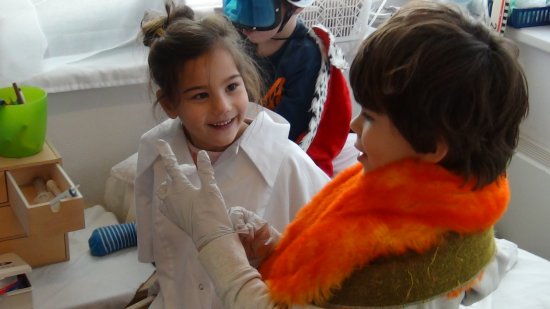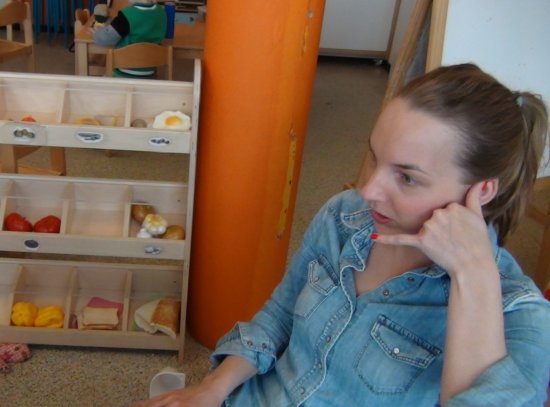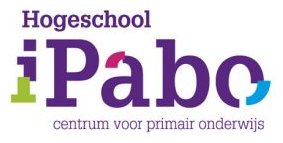On this page, we provide more information about the project Interaction in Play and the research contained in that project.
The central question was: “How can professionals in nursery school groups combine play objectives and language objectives in make-believe play?”
We joined with the professionals to look for answers.
Here, you can find answers to the following sub-questions:
- Why do practitioners think Language in Play is important?*
- What innovations does the research contribute, from a research perspective?*
- What does this contribute to practitioners’ experience?*
- How was the research carried out?*
- What were the results of the research?*
- How was the research financed?*
*1. Why do practitioners think Language in Play is important?
Young children develop through play. To promote this development, it is important for this play to be deepened, to create opportunities for fundamental learning processes. However, professionals have noted that in their experience play can get lost in the focus on a system-based approach to language education. These professionals want play to be retained and reinforced, because it is the most appropriate way for young children to learn. At the same time, they are also looking for opportunities to work on language objectives within play. Thanks to rapid and varied developments in modern communications, language is increasingly essential; general communication skills are indispensable in the 21st century (Marzano & Heflebower, 2012), including analysing and using information, appropriately approaching complex problems and issues, creating patterns and mental models, knowing and mastering yourself, and understanding and interacting with other people. Language is an essential tool for promoting these skills. Professionals note that it is difficult to combine language objectives and play objectives in practice.
The study investigated how professionals can use their own supervisory role during play to stimulate the quality of both play and language development. We mainly zoomed in on children’s development of language and thinking. Play constantly generates settings in which language and thinking can be stimulated.
*2. What innovations does the research contribute, from a research perspective?
This project, Interaction in Play, connects the two research areas of ‘play’ and ‘interaction’. How can language objectives be combined with play objectives? Research has shown that learning outcomes are not so much the result of the education programme, but more of the role the professional plays in interactions with the children (de Haan, Leseman & Elbers, 2011). Improving the quality of the interactions between the professional and the child during make-believe play looks promising, because it offers the opportunity to use language as a communication tool. However, professionals lack a well-founded ability to work on the two domains of language development and play development simultaneously. This is because, until now, the areas of language and play have been largely separate: hardly any research has been done into the role of language in play. When professionals succeed in combining play development objectives with those of language development, play can be a powerful source of language development and language can be a powerful source of play development. This project has given us an understanding of the way in which various supervisory roles in make-believe play create interactions which make the children at once more skilful at play and in language use: we call this the substantive integration of play objectives and language objectives.
We sought out instances of ‘good practices’ that clarify what the professional does in the interaction during play, when she does it, how this fits in with the children’s play and challenges them to go further, and why this interaction promotes the development of play and language.
*3. What does this contribute to practitioners’ experience?
What looks promising? Previous research, www.uitdagentotgesprek.nl, has shown that it is possible to have language and thinking conversations with young children if we raise problems, whether large or small, within a language-rich learning environment and if we give children the space to come up with solutions to those problems. We incorporated these findings into this new study, which led to a number of components we have summarised as: ten core components of Language in Play *. These core components of Interaction in Play describe matters such as principles for language-based play supervision and scenarios for activities. The core components of Interaction in Play give professionals a way to seize opportunities for directed supervision of play in order to achieve objectives for language and play. This enables young children to develop their play and language skills more effectively and efficiently, which in turn enables them to benefit more from the time they spend in the nursery groups.

*4. How was the research carried out?
The Interaction in Play project focused on designing a tried and tested strategy for the substantive integration of objectives for language and play. The study was carried out in three stages:
- stage 1: design the Language in Play prototype
- stage 2: investigate how the prototype works
- stage 3: definitive version of the Language in Play strategy
Stage 1. Design
We worked in three professional learning communities (PLCs) in which educational staff members at nursery schools or childcare centres and nursery school teachers worked with researchers. This ensured that the research combines professionals’ explicit and implicit professional knowledge with insights from theory and research. During meetings of the PLCs, over the course of one academic year, working versions of the strategy were developed which were then tested in practice. Through individual coaching using video recordings in their own practice, the professionals and researchers came together to reflect on the implementation: is it possible to realise both language objectives and play objectives when the professional joins in the make-believe play? In the PLCs, professionals also discussed their recordings with each other, in order to update the working versions. Eventually, a prototype was developed whose effectiveness was investigated during stage 2.
Stage 2. How the prototype works
The objective of this stage was to gain an understanding of the way in which improved supervision during make-believe play is paired with active and challenged participation by the children both in play itself and in the interactions within play. We carried out a small-scale summative evaluation in the form of a multiple case study.
Cases.
Some of the professionals from stage 1 implemented the prototype during a theme period lasting between 4 and 6 weeks. They played at least once a week with two target children. Therefore, a case consists of a professional and two target children. The professionals were spread out over toddler and nursery groups throughout the regions. The target children varied in their levels of language proficiency. We were able to collect sufficient data from 8 professionals and target children.
Data collection.
Data was systematically collected using a case study protocol. Professionals filled in an initial questionnaire about their method of play supervision at the beginning of the project. The professionals held concluding discussions in the PLCs, and the results of those discussions were noted. At the beginning, middle and end of the theme period, the professional and two target children were filmed engaging in make-believe play. Each recording was discussed afterwards with the professional, to ensure that we had a correct interpretation of the recording. Audio recordings were made of these interpretation interviews. The researchers made a note of their reflections as a result of the recordings and the follow-up discussion. The professionals kept a logbook of their own roles and those of the children. The researchers carried out a vocabulary test with the target children, to give an indication of the children’s language proficiency level.
Analyses.
The approach to the analysis is qualitative: it concerns deep, intensive descriptions of various cases, to gain an understanding of how the interaction contributes to the development of play and language. Quantitative data about the interaction supports the qualitative descriptions. Case study reports were compiled based on the initial questionnaires, logbooks, interpretation interviews and reflections. We combine the case study reports with quantitative data from the video recordings to obtain a portrait of each case.
The video recordings were transcribed in CLAN/CHAT, coded and analysed. The components drawn from the prototype study have been partially operationalised in variables for the behaviour of the professional and the children, which have been coded according to level of expression. For instance, the core component “Follow the children’s stories” is measured using a variable that indicates how the professional uses that expression to fulfil her role as mentor: is she really immersed in the make-believe play, does she give directions from outside the play, or does she steer the play? For example, the study focused on the extent to which the children take the initiative on the substance of the play (whether they introduce new elements) and on their resourcefulness (whether they independently take the initiative to talk, or only answer questions). The researchers expanded the operationalisations and tested the coding system together. Refinements were made in order to reach sufficient agreement between the coders. The researchers who achieved the greatest consensus carried out the definitive coding. Other components were assessed at a global level for the video recording as a whole, for example the children’s welfare and engagement with the play, and the way in which the professional is focused on the mutual play with the children. Two researchers assessed the videos on this point, and a third researcher checked that assessment. The variables are ordinal in nature. The categories of each variable were ordered on substantive and theoretical grounds. For some variables on the professionals’ side, the ranking ranged from very favourable to very unfavourable. This order was used to measure aspects such as the role of play supervisor. For other variables relating to the professional (such as stimulating complex thinking language), and for the child variables, the order ranged from (very) favourable to neutral. For each recording, frequency counts were carried out for all categories by variable.
The cases that showed an above-average level of favourable interaction in play were identified by comparing the cases on the basis of quantitative data. To this end, we merged the categories evaluated as very favourable and favourable. By comparing the portraits of these most favourable cases with those of the average cases, we can direct and add to the recommendations for the core components.

Stage 3: Definitive version of the Interaction in Play strategy
The prototype from stage 2 was converted into a transferable version which is as far as possible in line with professionals’ practical experience in pre-school and reception classes. The core components are divided into four groups: basic principles, exploring, connecting and enriching. The last three of these are common concepts in the professionalisation of educational staff members and nursery school teachers. Each core component includes explanatory notes and a clip from a video recording. The clips have been selected from among the video recordings made during stages 1 and 2.
*5. What were the results of the research?
The analyses are not yet fully complete. We will record the results here as soon as possible.
*6. How was the research financed?
The research was financed as a two-year project by the Stichting Innovatie Alliantie. www.regieorgaan-sia.nl
Sources:
Damhuis, R., De Blauw, A. & Brandenbarg, N. (2004). CombiList, een instrument voor taalontwikkeling via interactie. Praktische vaardigheden voor leidsters en leerkrachten. Nijmegen: Expertisecentrum Nederlands.
Haan, A. de, P. Leseman, & E. Elbers (2011). Pilot gemengde groepen 2007-2010. Onderzoeksrapportage oktober 2011. Utrecht: Universiteit Utrecht.
Marzano Robert, J. & T. Heflebower (2012). Klaar voor de 21e eeuw, vaardigheden voor een veranderende wereld. Bazalt Educatieve Uitgaven.




